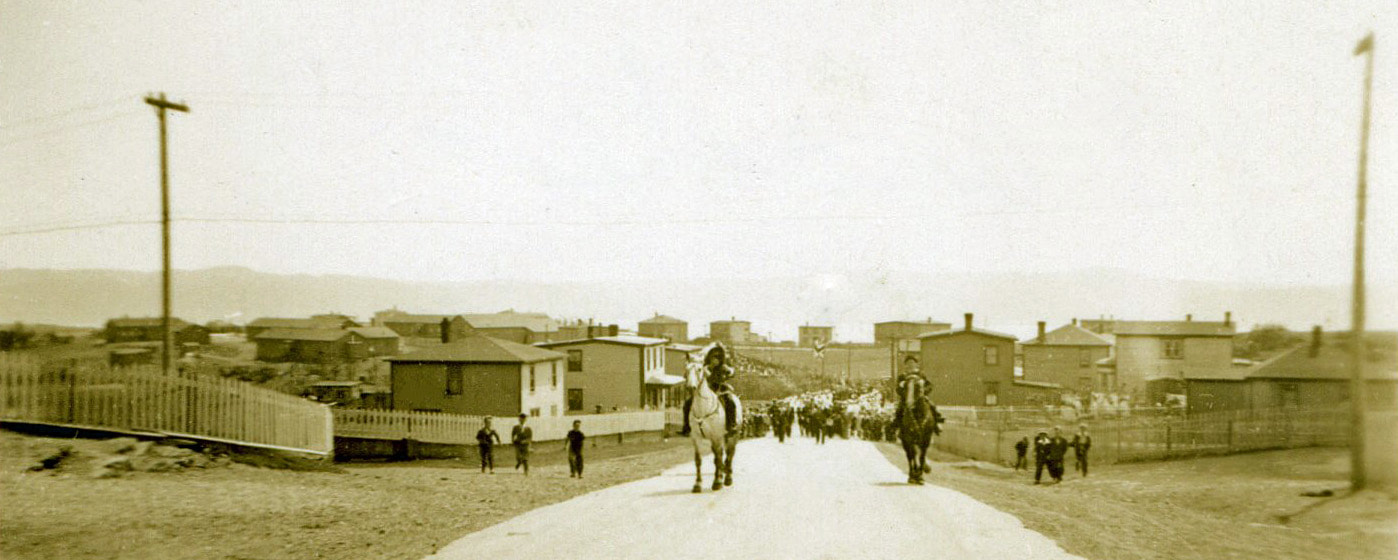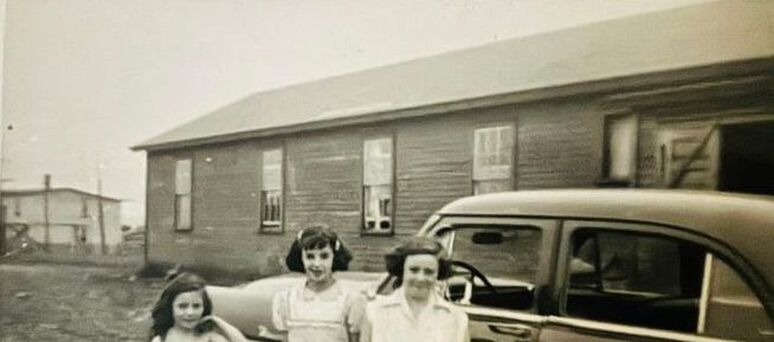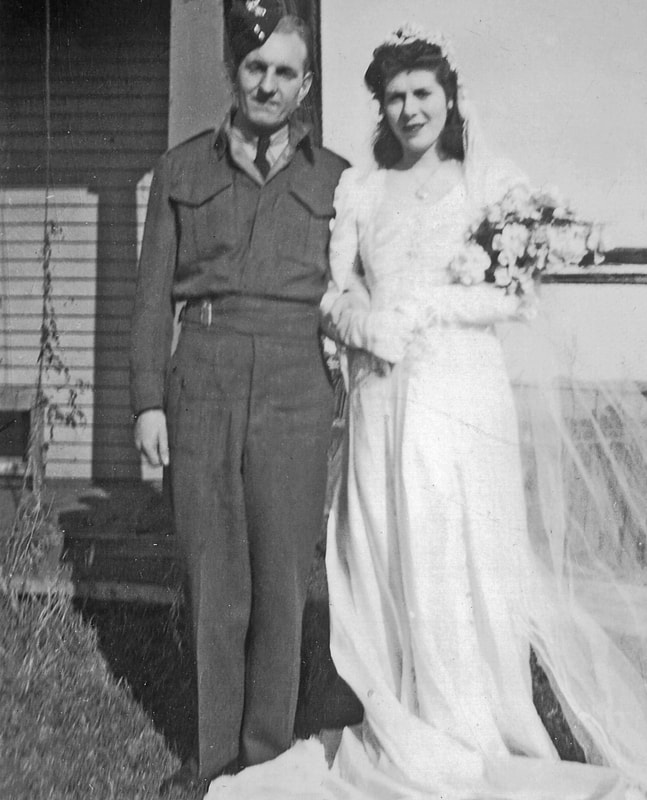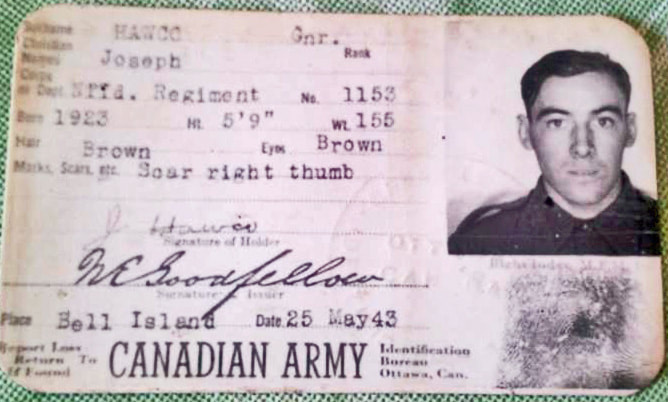HISTORY
MILITARY ACTIVITY
WW II
MILITARY ACTIVITY
WW II
NEWFOUNDLAND MILITIA'S 1st COASTAL DEFENCE BATTERY
by Gail Hussey-Weir
Created November 2017 / updated March 2024
by Gail Hussey-Weir
Created November 2017 / updated March 2024
Prior to the outbreak of WWII, the 1936 Newfoundland Defence Scheme identified 5 strategically significant resources. Among them were the Bell Island iron mines. (The others were the Newfoundland Airport at Gander, the Botwood harbour and seaplane base, the city of St. John's, and the termini of 9 transatlantic cables.) In 1937, a Canadian chiefs of staff memorandum entitled "The Defence of Sydney and Its Steel Industry" stated that at least 30 per cent of Canada's steel came from the Dominion Steel and Coal Company's smelter in Sydney, and all the iron ore to supply it came from the mines at Wabana on Bell Island. Looking ahead to the production of munitions and the defence of the mines, the chiefs argued that Bell Island was a matter of imperial concern.
When WWII broke out in 1939, Newfoundland had no trained military force and members of the Newfoundland Constabulary were called upon to "hold the fort" for the first several months of the war. 50 constabulary were sent to Bell Island to guard the iron mines against sabotage. Meanwhile, the government created the Newfoundland Militia to serve as a local defence force. Newfoundland's Governor Walwyn, who was a Vice-Admiral in the Royal Navy, lobbied the Canadian government for involvement in local defence. Canada agreed and provided weapons and training for the Newfoundland Militia. As well, their presence provided security for the major military and economic assets of the country (of Newfoundland, which was not yet a province of Canada). By April of 1940, the Constabulary men were able to return to normal duties as enough militiamen had been trained to take over. Among the weapons provided by Canada were the two 4.7-inch guns and two searchlights to defend the Bell Island loading piers. The Battery was constructed in June and manned by Royal Canadian Artillery personnel until August 27, 1940, when it was taken over by the Newfoundland Militia's 1st Coastal Defence Battery.
The 50-man Bell Island detachment of the Newfoundland Constabulary had been housed on the north side of Memorial Street in the Star of the Sea Hall, which was rented by DOSCO, and which was located about the point where Memorial Street met The Old Front Road (now Nish Jackman Drive). These makeshift premises were taken over by the militiamen, who occupied them until April 1941, when purpose-built barracks, also paid for by DOSCO, were built at the site. These barracks consisted of 8 main buildings and 5 small hutments (a military term meaning temporary wooden houses for troops). The 8 main buildings included 3 main barracks, a cook house, 2 dining halls, hospital, and officers' quarters. The buildings were situated in the centre of the Star Field. The officers' mess was at the east end of the Star Field and separated from the other buildings by a small parade ground, which was 75 yards square.
Major J.P. (Jos) O'Driscoll, a member of a long-established St. John's family, was promoted to the rank of Lieutenant-colonel and appointed as the first Commanding Officer. He had joined the Newfoundland Regiment at age 16 and fought in France and Belgium before being wounded at Monchy-le-Preux in April 1917. He commanded the 1st Coastal Defence Battery at Bell Island for its first two years.
Sources: Steven High, editor, Occupied St. John's: A Social History of a City at War, 1939-1945, pp. 24-26; Gerald W.L. Nicholson, The Fighting Newfoundlander, pp. 520, 532; Steve Neary, The Enemy on Our Doorstep, p. 10; John Skinner, personal interview, Nov. 8, 1991.
When WWII broke out in 1939, Newfoundland had no trained military force and members of the Newfoundland Constabulary were called upon to "hold the fort" for the first several months of the war. 50 constabulary were sent to Bell Island to guard the iron mines against sabotage. Meanwhile, the government created the Newfoundland Militia to serve as a local defence force. Newfoundland's Governor Walwyn, who was a Vice-Admiral in the Royal Navy, lobbied the Canadian government for involvement in local defence. Canada agreed and provided weapons and training for the Newfoundland Militia. As well, their presence provided security for the major military and economic assets of the country (of Newfoundland, which was not yet a province of Canada). By April of 1940, the Constabulary men were able to return to normal duties as enough militiamen had been trained to take over. Among the weapons provided by Canada were the two 4.7-inch guns and two searchlights to defend the Bell Island loading piers. The Battery was constructed in June and manned by Royal Canadian Artillery personnel until August 27, 1940, when it was taken over by the Newfoundland Militia's 1st Coastal Defence Battery.
The 50-man Bell Island detachment of the Newfoundland Constabulary had been housed on the north side of Memorial Street in the Star of the Sea Hall, which was rented by DOSCO, and which was located about the point where Memorial Street met The Old Front Road (now Nish Jackman Drive). These makeshift premises were taken over by the militiamen, who occupied them until April 1941, when purpose-built barracks, also paid for by DOSCO, were built at the site. These barracks consisted of 8 main buildings and 5 small hutments (a military term meaning temporary wooden houses for troops). The 8 main buildings included 3 main barracks, a cook house, 2 dining halls, hospital, and officers' quarters. The buildings were situated in the centre of the Star Field. The officers' mess was at the east end of the Star Field and separated from the other buildings by a small parade ground, which was 75 yards square.
Major J.P. (Jos) O'Driscoll, a member of a long-established St. John's family, was promoted to the rank of Lieutenant-colonel and appointed as the first Commanding Officer. He had joined the Newfoundland Regiment at age 16 and fought in France and Belgium before being wounded at Monchy-le-Preux in April 1917. He commanded the 1st Coastal Defence Battery at Bell Island for its first two years.
Sources: Steven High, editor, Occupied St. John's: A Social History of a City at War, 1939-1945, pp. 24-26; Gerald W.L. Nicholson, The Fighting Newfoundlander, pp. 520, 532; Steve Neary, The Enemy on Our Doorstep, p. 10; John Skinner, personal interview, Nov. 8, 1991.
Below is a photo of the Orangemen's Parade coming up Memorial Street towards St. Michael's RC Church, in the 1940s or 50s. St. Edward's Convent is just out of the picture on the left. Looking to the east in the top left background you can see a group of low buildings. I believe these are the barracks and other buildings of the Newfoundland Militia's 1st Coastal Defence Battery. After the war, they were used for the Newfoundland Boys' Home and Training School from 1945 to 1953, at which time it was moved back to Whitbourne. William Lindsay photo courtesy of Archives & Special Collections, MUN Library.
The c.1956 photo below shows one of the Newfoundland Regiment buildings on Bell Island that was occupied by the Boys' Home following WWII. After the Boys' Home relocated to Whitbourne in January 1953, this and the associated buildings became rental properties before eventually being torn down. The house in the left of the photo is on the opposite side of Memorial Street; it was the home of Daisy Cahill, who ran the Front Post Office, which was attached to her house. The Cahill house was still standing in 2023. Photo courtesy of Glenda Brown-Annand. The children in the photo are believed to be daughters of Thomas and Maude Dwyer, who rented this particular building in the late 1950s.
In the photo below of Stanley Hussey and his bride, Jessie Dawe, in October 1943, Stan is wearing the uniform of the Newfoundland Militia's 1st Coastal Defence Battery.
Joe Hawco's Newfoundland Militia 1st Coastal Defence ID card, 1943, courtesy of his granddaughter, Jeanette Hawco-Ricketts.



